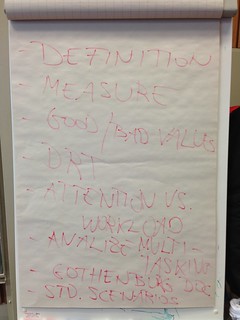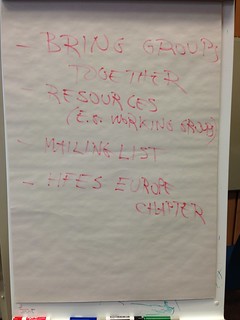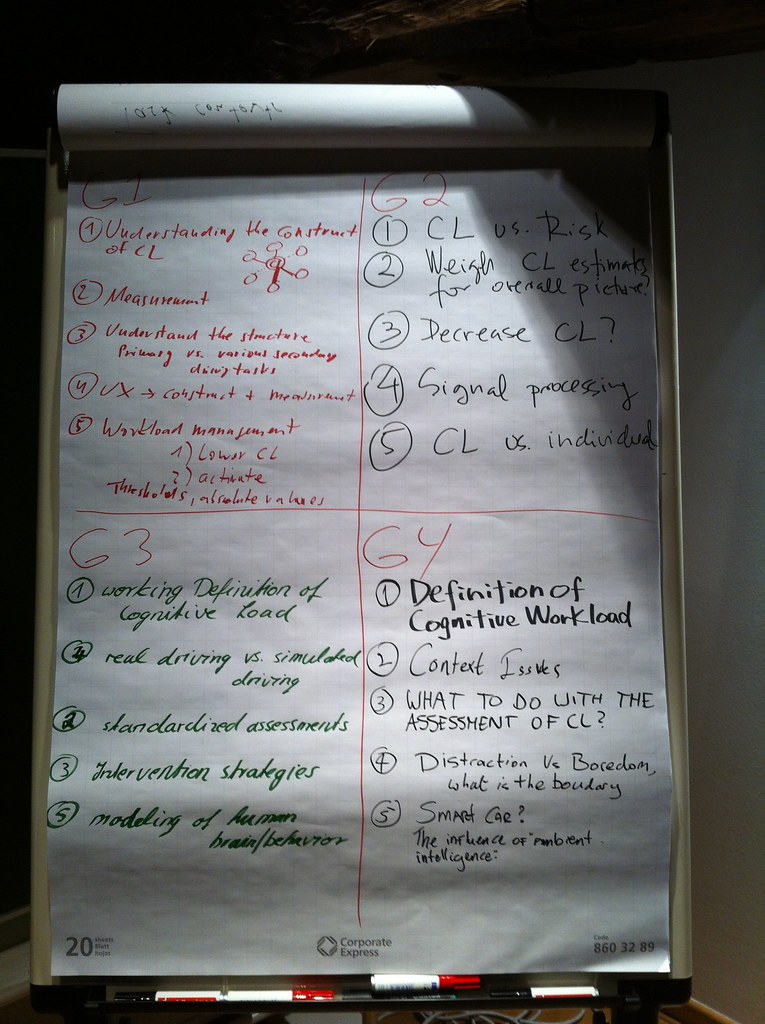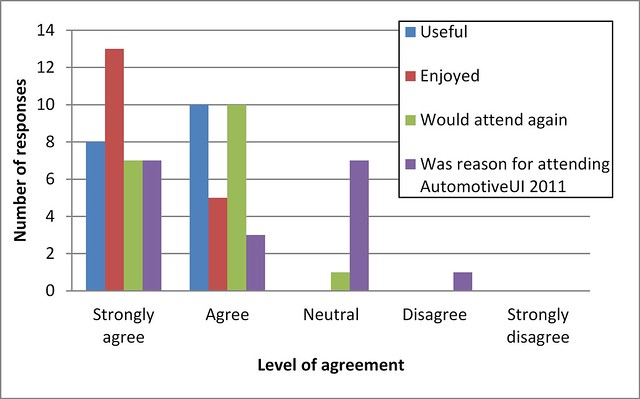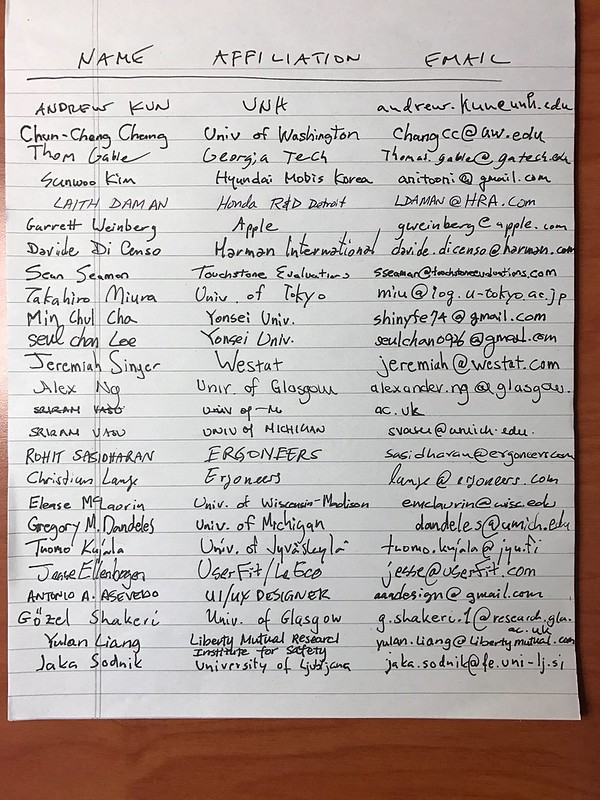
Tag Archives: report
2013 workshop report
Around 30 people from industry and academia attended CLW 2013.
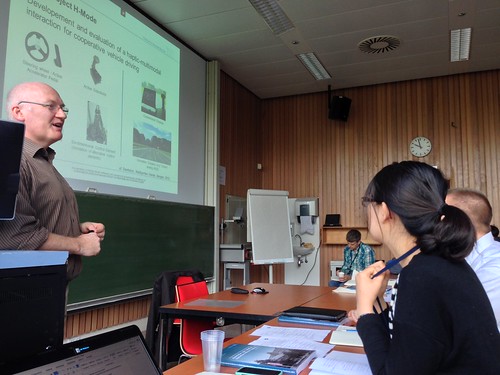
The workshop featured two invited presentations. First, Klaus Bengler gave a keynote address in which he discussed human-computer interaction in automated vehicles. Klaus’s presentation was very well received, especially as driving automation is quickly becoming more than just a dream. For example, AutomotiveUI 2013 featured a live demo of TNO’s Cooperative Adaptive Cruise Control (CACC).
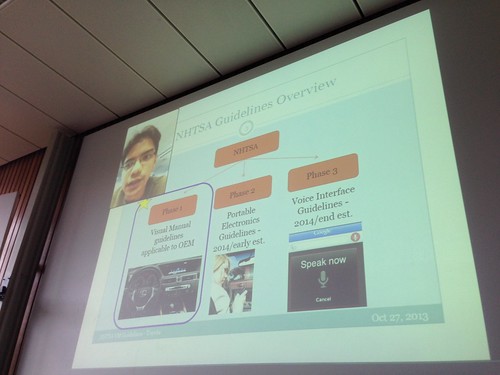
In the afternoon Tuhin Diptiman joined us via Skype to share his assessment of NHTSA’s Manual-Visual guidelines. This discussion sparked a great deal of interest and discussion, and we expect that this interest will carry over if CLW is organized again in 2014.
In addition to the invited presentations CLW 2013 featured seven presentations by workshop participants, covering topics from utilizing physiological measurements for cognitive load assessment, to managing cognitive load using ambient displays.
We concluded the workshop with suggestions for next steps (see images below – click for larger versions). The main ideas focused on three groups of issues:
- There’s a need to further discuss the basics, such as the very definition of cognitive load, and its relationship to concepts such as attention.
- We need to improve and standardize methods/techniques. E.g. what are values of lane position variance that indicate that cognitive load has increased too much in a particular context? And how can we use the Detection Response Task (DRT) for evaluating in-vehicle interactions?
- There is a need to provide CLW participants with a way to interact between workshops, perhaps using a LinkedIn group.
The organizers would like to thank Microsoft Research for their financial support of CLW 2013. Thanks to Shamsi Iqbal for securing this support. We thank Klaus and Tuhin, as well as the other presenters, for giving engaging talks. Finally, we thank all of the workshop attendees for raising questions, discussing posters, and sharing their knowledge and expertise.
Pictures from the workshop are available on Flickr.
2012 workshop report

Overview
Over 35 people from government, industry and academia attended CLW 2012.
For CLW 2012 the organizers made the decision to involve a large number of experts in the workshop, instead of only including contributions by authors responding to our CFP. Thus, the CLW 2012 program included three expert presentations, as well as a government-industry panel with four participants. Each of these expert participants discussed unique aspects of estimating and utilizing cognitive load for the design and deployment of in-vehicle human-machine interfaces.
Bryan Reimer opened the expert presentations with a discussion of the relationship between driver distraction and cognitive load. Next, Bruce Mehler discussed practical issues in estimating cognitive load from physiological measures. Finally, Paul Green discussed how cognitive load measures might fit in with the NHTSA visual-manual guidelines.
The expert presentations were followed by a government-industry panel. Chris Monk (Human Factors Division Chief at NHTSA) presented the NHTSA perspective on cognitive load and HMI design. Jim Foley (Toyota Technical Center, USA) introduced the OEM perspective. Scott Pennock (QNX & ITU-T Focus Group on Driver Distraction) introduced issues related to standardization. Garrett Weinberg (Nuance) focused on issues related to voice user interfaces.
Following these presentations, and the accompanying lively discussions, workshop participants viewed eight posters.
Evaluation
At the end of the workshop we asked participants to indicate their level of agreement with these four statements:
- I found the workshop to be useful.
- I enjoyed the workshop.
- I would attend a similar workshop at a future AutomotiveUI conference.
- This workshop is the reason I am attending AutomotiveUI 2011.
The responses of 13 participants are shown below (the workshop organizers in attendance did not complete the questionnaire). They indicate that the workshop was a success.
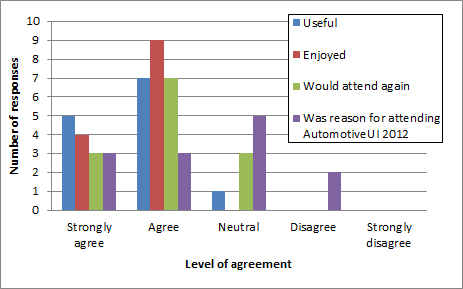
Next steps
Since the conclusion of CLW 2012 co-organizers Peter Froehlich and Andrew Kun joined forces with Susanne Boll and Jim Foley to organize a workshop at CHI 2013 on automotive user interfaces. Also, a proposal for CLW 2013 at AutomotiveUI 2013 is in the works.
Thank you presenters and participants!
The organizers would like to extend our warmest appreciation to all of the presenters for the work that went into the expert presentations, the panel discussion, and the poster papers and presentations. We would also like to thank all of the workshop attendees for raising questions, discussing posters, and sharing their knowledge and expertise.
You can see more pictures from CLW 2012 on Flickr.
2011 workshop report
Overview
Twenty-five people from industry, government and academia were in attendance at CLW 2011. They heard eight presentations on topics related to in-vehicle cognitive load, and spent about two hours discussing the issues raised in the presentations.
Outcomes
Our discussions culminated in the work of four participant teams, each tasked with identifying the top issues we face as a community. The issues they identified are shown below:
From the image above we can see that two issues dominated the meeting:
- Definition of cognitive load. The majority of participants felt that the concept of cognitive load has to be defined more rigorously.
- Cognitive load management. How should we use cognitive load estimates? This question generated a number of ideas for possible research, from identifying thresholds for taking action in managing cognitive load, to accounting for context (including individual differences), to signal processing.
Evaluation
At the end of the workshop we asked participants to indicate their level of agreement with these four statements:
- I found the workshop to be useful.
- I enjoyed the workshop.
- I would attend a similar workshop at a future AutomotiveUI conference.
- This workshop is the reason I am attending AutomotiveUI 2011.
The responses of 18 of the 25 participants are shown below (the four workshop organizers in attendance did not complete the questionnaire). They indicate that the workshop was a success.
What is next?
Encouraged by CLW 2011, we are working on a proposal for CLW 2012 at AutomotiveUI 2012. Also, this fall Peter Froehlich and Andrew Kun will organize a special interest session on this topic at the 2012 ITS World Congress.
Thank you presenters and participants!
The workshop organizers are keenly aware of the fact that putting together a website, and making lunch reservations at a restaurant, are the fun part of organizing a workshop. The hard part is preparing papers, and participating in discussions. Of course, this is the work that was taken on by the workshop presenters and participants. The organizers are grateful for their efforts.
See more photos from CLW 2011 on Flickr.
